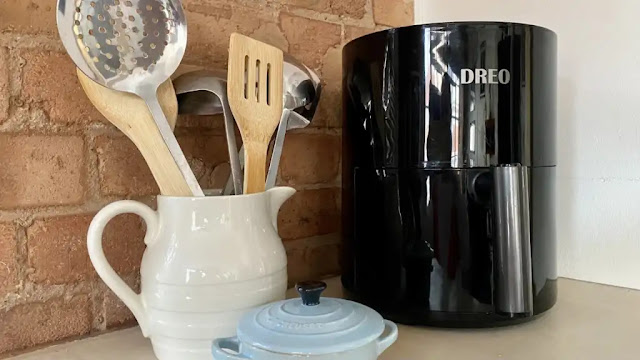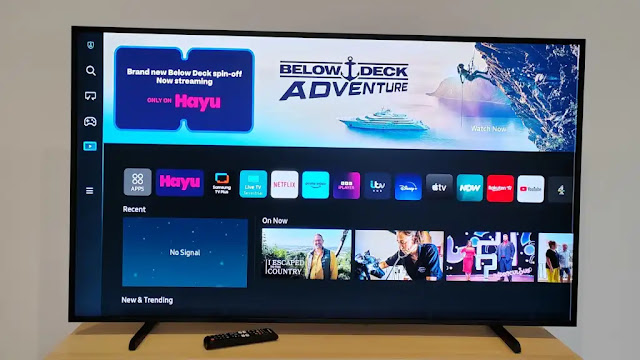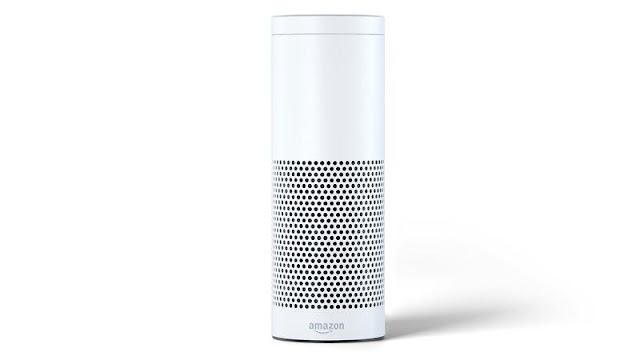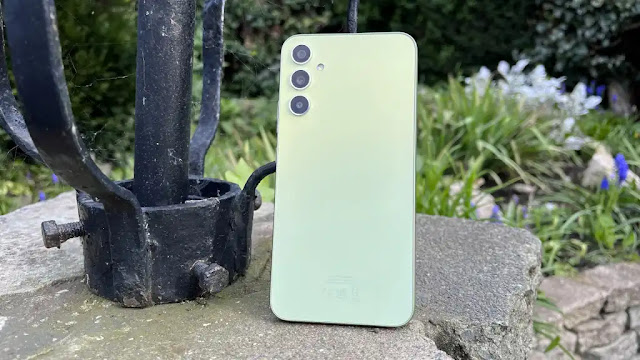Google Assistant is the best voice assistant around, so you won't go wrong with one of Google's smart speakers and displays. But which Google Home is best for your home?
Google now has six devices in its Google Home line-up: the original Google Home (£89/$99), the Nest Mini (£49/$49), the older Home Mini (£49/$49), the Home Max (£299/$299), the Home Hub (since rebranded as the Google Nest Hub - £119/$129), and the Google Nest Hub Max (£219/$229).
It's worth noting that these are only Google's own devices - but you can get the Google Assistant in loads of other smart speakers and smart displays by other manufacturers. We're focussing on the official Google devices here, but any Google Assistant device will offer roughly the same functionality.
What Is The Difference Between Google Home Models?
If you're looking to buy your first smart speaker, Google Nest Mini is a great choice. It does almost everything the more expensive models do, but with a smaller speaker also benefits from a lower price. You can also still buy the older Home Mini, which has the exact same design with a little less audio oomph and slower processing - you shouldn't buy this at full price, but could be worth it if you can find it cheaper than the Nest Mini.
Step up to the standard Google Home if you want louder, better-quality audio, and if you're a true audiophile the Max is better still in this regard (but will be overkill - and overly priced - for most users).
Meanwhile, the Hub offers the most feature-complete service, with an integrated 7in display on which Google Assistant can show as well as tell (though it's not the only smart display), and play photo slideshows or function as a clock in standby mode. Of course, every Google Home device can tell you the time when asked, and we think the Hub's audio quality is below that of even Google Home Mini (which is actually surprisingly good for such a tiny device).
The Google Nest Hub Max has a larger 10in display, better 2.1 speakers, and an integrated camera that lets you make video calls, use the Hub as a security camera (with a Nest Aware subscription), use gestures to control audio playback and set up Face Match.
Each device works independently of its siblings, but you can also combine any or all of these devices for mutli-room audio and broadcasting functionality.
The one feature all share is the most important of all: Google Assistant. This is the company's smart voice assistant, and the equivalent to Amazon's Alexa, Microsoft's Cortana, Samsung's Bixby and Apple's Siri. We find it the most accomplished of all, able to understand a natural, conversational tone and the most likely to be able to give you an answer to the most random of questions.
What Does Google Assistant Do?
We're getting to the stage now where it's not a question of what can Google Assistant do, but what can't it do? If you have an Android phone, chances are you've already tried Google Assistant (it's available as a free download from the Play Store), but you'll find it works much better - and is more comfortable to use - in a home environment.
For many people the chief task of Google's Home speakers is to play music. You can tune into internet radio stations, or listen to anything available on Google Play Music, YouTube Music Premium, Spotify, or Deezer Premium+. If you don't subscribe to these services there's also Spotify Free, or you can access playlists stored in the free version of Google Play Music. All Google Home devices also function as Bluetooth speakers, so you can stream music directly from your phone, tablet or laptop.
If music is the be all and end all for you, Google Home Max is best for this task. If you're not all that fussy a listener then any one of the range will do. Every model can also be connected to a Bluetooth speaker so you can take advantage of your existing sound setup, too.
Controlling other smart home devices, such as smart lights and heating, is another common use for Google Home. All six can control any device that is compatible with Google Assistant, but Nest Hub and Nest Hub Max are most useful if you have a number of said devices since it allows you to control all from a single dashboard as you can in the Google Home app. For smart services that are not directly compatible with Google Assistant you can often find a workaround with IFTTT.
Gleaning information about your day ahead, whether that be calendar appointments, journey times into the office, weather alerts or news bulletins, is another common feature across the range, best accessed with the term "Okay Google, good morning". If you want to see and hear you need Google Nest Hub, but otherwise any Google Home device can tell you what you want to hear.
Google Assistant also lets you place free calls to anyone in your contacts book over Wi-Fi, or even call back to your speaker from your mobile, essentially replacing a landline. These are simply voice calls, because while Google Nest Hub has a display it does not have a camera - you will be able to see the video feed from your recipient if you specifically place the call over Google Duo, but they won't be able to see you.
It's also worth pointing out that you can set up various parental controls that restrict what your kids hear - and now see on Nest Hub's display - using Digital Wellbeing content filters.
This is merely scratching the surface of what Google Assistant can do, with so many other tasks achievable with a single voice command - we're always discovering new functionality, and it's often very much the case that you don't really know until you ask.
The Assistant can answer mathematical questions or any general search query that you might enter into a web browser, it can find local restaurants and cinema times, it can set timers, alarms and reminders, and it can even play games and tell you stories and jokes.
Should I Buy Now Or Wait For An Updated Version?
Google tends to release new hardware only once per year, and usually at the beginning of October, though this isn't set in stone. That means we're not expecting to see a Google Home 2 or updated versions of the Hub or Max until October 2020.
What does often happen is Google rolls out software updates - usually in the US first, but later arriving in the UK and elsewhere. Sometimes these are announced at Google I/O, a developer conference traditionally held in May/June. These updates will be added to your current Google Home device, so there's no need to hold off for an updated model.
Google Home vs Mini vs Max vs Hub specs Comparison
| Google Nest Mini | Google Home Mini | Google Home | Google Nest Hub | Google Nest Hub Max | Google Home Max | |
| Retail Price | £49/$49 | £49/$49 | £89/$99 | £119/$129 | £219/$229 | £299/$299 |
| Audio | 40mm driver | 40mm driver | 2in driver and dual 2in passive radiators | Full range speaker (80dB SPL @ 1KHz) | 2x 18mm 10W tweeters, 1x 75mm 30W woofer | 2x 4.5in high-excursion dual voice-coil woofers, 2x 0.7in custom tweeters |
| Mics | 3 | 2 | 2 | 2 | 2 | 6 |
| Display | No | No | No | 7in LCD touchscreen | 10in HD LCD touchscreen | No |
| Extras | None | None | None | Ambient light sensor | Ambient light sensor, 6.5Mp camera, Chromecast built-in | Ambient light sensor, orientation sensor, Smart Sound, Chromecast built-in |
| Connectivity | Dual-band 802.11ac Wi-Fi, Bluetooth 5.0 | Dual-band 802.11ac Wi-Fi, Bluetooth 4.1 | Dual-band 802.11ac Wi-Fi, Bluetooth | Dual-band 802.11ac Wi-Fi, Wi-Fi, Bluetooth 5.0 | Dual-band 802.11ac Wi-Fi, Wi-Fi, Bluetooth 5.0 | Dual-band 802.11ac Wi-Fi, Bluetooth 4.2 |
| Ports | DC | Micro-USB | DC | DC | DC | AC, USB-C, AUX |
| Dimensions | 98x42mm | 98x42mm | 96.4x142.8mm | 178.5x67.3x118mm | 250.1x101.2x182.6mm | 336.6x154.4x190mm |
| Weight | 181g | 173g | 477g | 480g | 1.3kg | 5.3kg |
| Colours | Chalk, Charcoal, Coral, Sky | Chalk, Charcoal, Coral | Chalk (other colours sold separately) | Sand, Aqua, Chalk, Charcoal | Chalk, Charcoal | Chalk, Charcoal |
Best Google Home Reviews
1. Google Nest Mini
- $49
Despite the big name change, the Nest Mini is far from an overhaul of the Home Mini - though you can essentially think of it as the Home Mini 2.
If your house is already kitted out with the originals there’s no real reason to swap them out for the newer model, as the design and functionality is basically the same. Audio has improved a lot though, if you want to use it as a standalone speaker, while a machine learning chip makes basic commands quicker to use.
The design is essentially unchanged, aside from a new Sky colour, but there is one welcome tweak: a small indentation on the back for wall-mounting, letting you easily hang the Nest Mini from any nail or screw.
So don't rush out to grab a Nest Mini to replace an existing Home Mini. But for anyone looking to add Google to more rooms, or get the Google Assistant into their home for the first time, the Nest Mini is the new best, and cheapest, way to do it.
2. Google Nest Hub Max
- £229
The Google Nest Hub Max is the best smart display we've tested to date.
It brings along a larger, more useful display as well as a camera which is far more useful than simply making video calls. It can recognise different users, be used as a security camera and supports gestures for playback.
Futhermore, the audio performance is excellent so well worth the upgrade if you want to listen to music. The JBL Link View has better audio but we prefer the Max as an all-round device.
3. Google Home
- $99
The original and standard Google Home is arguably still one of the best, carefully balancing decent audio quality with great functionality to achieve an incredible price.
It's true that it now sees competition within its own home, with Google Home Max besting it on sound (at a much higher price), and Nest Hub adding a display but sacrificing audio quality. Google Home Mini is cheaper too, but if you love the Mini this is the device you'll want to buy next.
Google Home answers all our questions, keeps us entertained and up to date, and even turns on and off our lights. It is quite literally one of the best and most exciting talking points our home has seen.
4. Google Home Mini
- $49
Mini but mighty is the only way to describe this affordable smart speaker from Google. Thanks to the inclusion of Google Assistant it's packed with functionality, and despite its diminutive size the audio is surprisingly good.
It's since been replaced by the Nest Mini, which packs better audio and faster processing, but the Home Mini is still worth considering if you can find it at less than full price.
It's priced low enough to appeal to those looking to try a smart speaker for the first time, and it's ideal for those who wish to pair it with other Google Home devices in order to stream audio and broadcasts all around the home. While the more expensive Google Home devices might feel at home in the kitchen or lounge, Google Home Mini is ideal for the bedrooms.
Audiophiles aren't going to be impressed by Google Home Mini's reproduction of lows and mids, but we're not all audiophiles. Many users will be quite satisfied with its highs, and for everyday conversing with the Assistant the 40mm driver is adequate. Now that you can connect a Bluetooth speaker, there's a workaround for this in any case.
5. Google Nest Hub
- $129
It might not be flawless but we feel Google's Nest Hub (formerly Home Hub) with Google Assistant inside is an excellent option for a smart display so far. It's an affordable price and the compact, stylish design will ensure it fits almost anywhere in your home.
There might not be a camera and audio quality isn't the best but this is reflected in the price. What Nest Hub does have is an excellent screen on which Google Assistant can show as well as tell.
You might find it a little too small for some rooms, but it generally works very well for all manner of tasks including streaming music, watching video and simply providing useful information.
If you can afford it, get the much better Nest Hub Max.
6. Google Home Max
- $299
If you're looking for a smart speaker with the biggest sound, the Google Home Max delivers in bucket loads. This this is a huge speaker with more power than you'll know what to do with.
It's perfectly capable a fueling a house party on its own, never mind getting two for a stereo pair. It's on a similar level to the Sonos Play:5, but with the addition of smart functionality through Google Assistant.
It's big and it's expensive compared to other smart speakers, albeit now less expensive than previously. If you're looking for a cheaper option that's just as big on sound consider the Play One.
👉👇You May Also Like👇👌
View the original article here

























0 comments:
Post a Comment